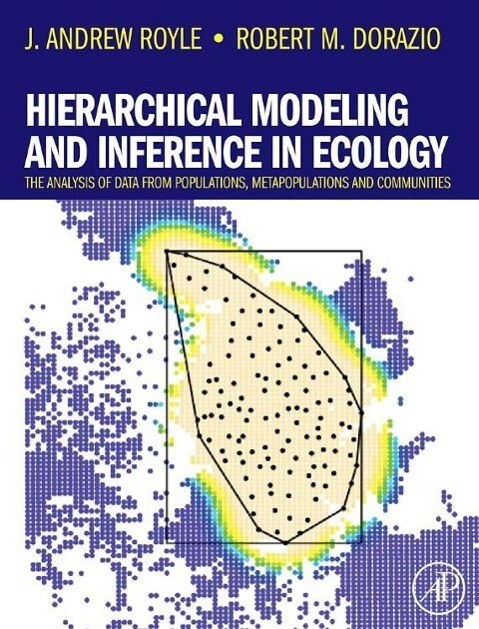
Zustellung: Fr, 11.07. - Di, 15.07.
Versand in 7 Tagen
VersandkostenfreiBestellen & in Filiale abholen:
A guide to data collection, modeling and inference strategies for biological survey data using Bayesian and classical statistical methods.
This book describes a general and flexible framework for modeling and inference in ecological systems based on hierarchical models, with a strict focus on the use of probability models and parametric inference. Hierarchical models represent a paradigm shift in the application of statistics to ecological inference problems because they combine explicit models of ecological system structure or dynamics with models of how ecological systems are observed. The principles of hierarchical modeling are developed and applied to problems in population, metapopulation, community, and metacommunity systems.
The book provides the first synthetic treatment of many recent methodological advances in ecological modeling and unifies disparate methods and procedures.
The authors apply principles of hierarchical modeling to ecological problems, including
* occurrence or occupancy models for estimating species distribution
* abundance models based on many sampling protocols, including distance sampling
* capture-recapture models with individual effects
* spatial capture-recapture models based on camera trapping and related methods
* population and metapopulation dynamic models
* models of biodiversity, community structure and dynamics
This book describes a general and flexible framework for modeling and inference in ecological systems based on hierarchical models, with a strict focus on the use of probability models and parametric inference. Hierarchical models represent a paradigm shift in the application of statistics to ecological inference problems because they combine explicit models of ecological system structure or dynamics with models of how ecological systems are observed. The principles of hierarchical modeling are developed and applied to problems in population, metapopulation, community, and metacommunity systems.
The book provides the first synthetic treatment of many recent methodological advances in ecological modeling and unifies disparate methods and procedures.
The authors apply principles of hierarchical modeling to ecological problems, including
* occurrence or occupancy models for estimating species distribution
* abundance models based on many sampling protocols, including distance sampling
* capture-recapture models with individual effects
* spatial capture-recapture models based on camera trapping and related methods
* population and metapopulation dynamic models
* models of biodiversity, community structure and dynamics
Inhaltsverzeichnis
Introduction; Site-occupancy models; Closed population models; Modelling individual effects in closed populations; Abundance as a state variable; Abundance as a state variable; Dynamic site occupancy models; Cormack-Jolly-Seber models; Jolly-Seber models; Animal community models; Occupancy models with spatial dynamics; Open models for animal communities; Temporaly dynamic models for abundance; Other potential topics; Statistical concepts and philosophy; Appendices (online or in text) Appendix1: R-tutorial, Sample R-functions for implementing several methods Appendix2: WinBUGS tutorial and R2WinBUGS package Appendix3:Sample WinBUGS and R-scripts for examples used in book
Produktdetails
Erscheinungsdatum
01. Juli 2008
Sprache
englisch
Seitenanzahl
464
Autor/Autorin
J Andrew Royle, Robert M Dorazio
Verlag/Hersteller
Produktart
gebunden
Gewicht
953 g
Größe (L/B/H)
236/188/30 mm
ISBN
9780123740977
Entdecken Sie mehr
Bewertungen
0 Bewertungen
Es wurden noch keine Bewertungen abgegeben. Schreiben Sie die erste Bewertung zu "Hierarchical Modeling and Inference in Ecology" und helfen Sie damit anderen bei der Kaufentscheidung.









